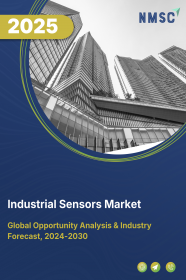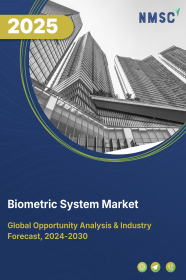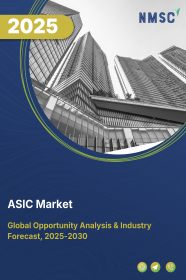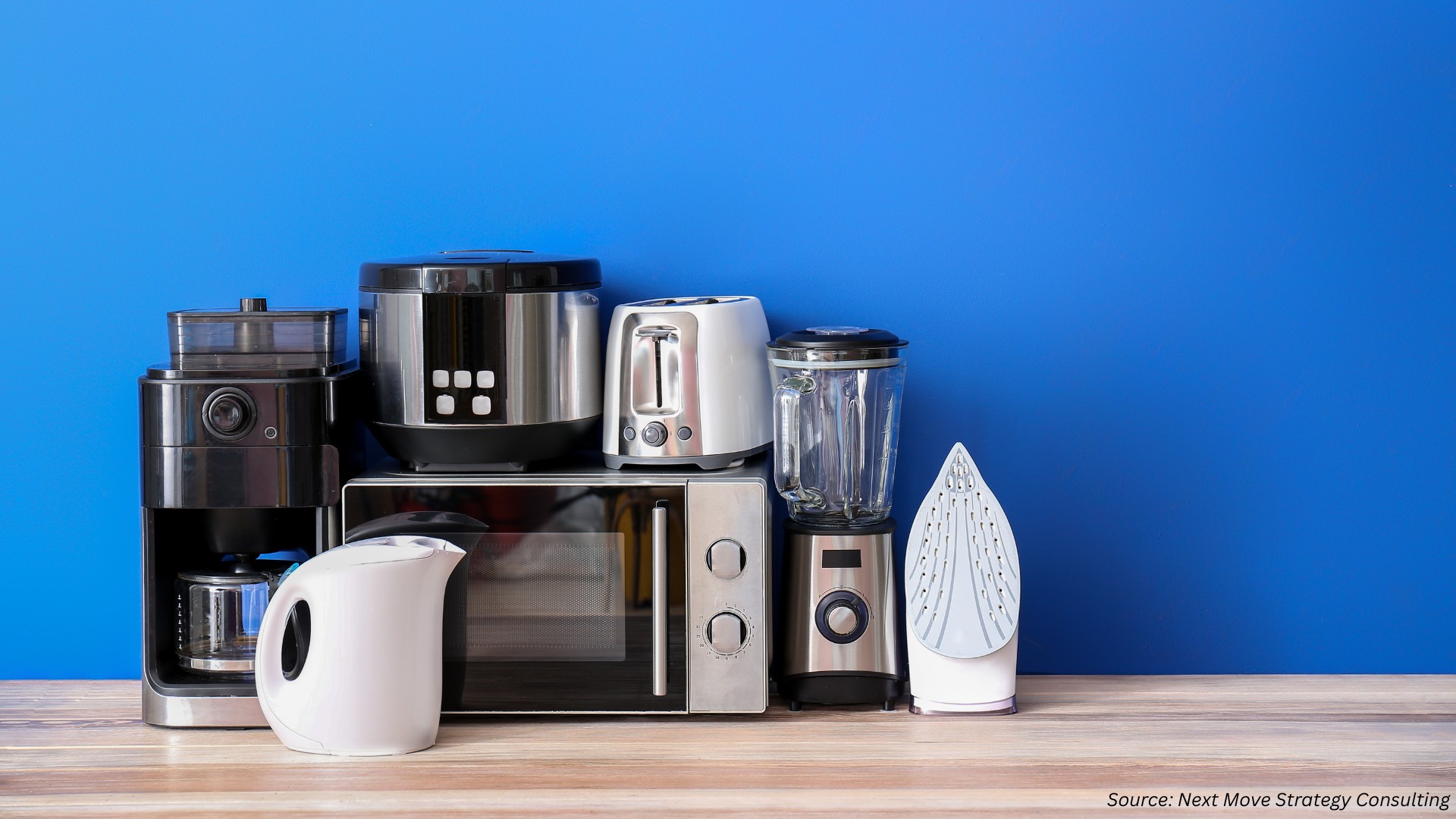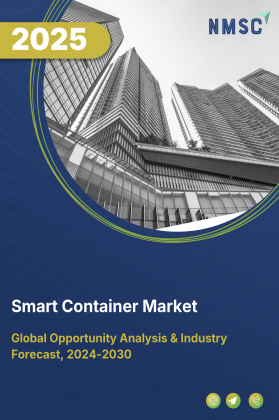
Smart Container Market by Component (Hardware, Software, and Services), by Technology (Global Positioning System (GPS), Cellular, Long Range Wide Area Network, and Bluetooth Low Energy and Others), by Containers (Dry Containers, Refrigerated Containers, Tank Containers, and Open-Top Containers), by Deployment (Retrofit, OEM Embedded and Hybrid), and by End-User (Food & Beverage, Pharmaceuticals, and Oil & Gas, Healthcare and Others) – Global Opportunity Analysis and Industry Forecast, 2025-2030.
Industry Overview
The global Smart Container Market size was valued at USD 6.41 billion in 2024, and is expected to be valued at USD 7.95 billion in 2025. The industry is projected to grow, reaching USD 23.47 billion by 2030 with a CAGR of 24.2% between 2025-2030.
The market is experiencing robust growth driven by surging international trade, cross-border e-commerce, and increasing regulatory requirements. With the rapid expansion of global B2B e-commerce, businesses are demanding real-time cargo visibility, efficient logistics, and secure transport solutions.
Smart containers equipped with IoT sensors offer critical advantages such as tracking, temperature control, and condition monitoring, making them indispensable in modern supply chains. Regulatory initiatives like the Smart Container Alliance and rising security concerns further accelerate adoption.
However, high implementation and integration costs, especially for small operators, hinder scalability. Looking ahead, AI integration presents a major opportunity by enabling predictive analytics, anomaly detection, and automation, enhancing efficiency and resilience in global trade logistics.
Surge in Global Trade and Cross-Border E Commerce Boost the Market Growth
One of the key global drivers accelerating the adoption of smart containers is the surge in international trade and cross-border e-commerce. As global commerce expands, businesses are increasingly reliant on efficient, transparent, and secure logistics to manage high volumes of goods moving across borders.
The growth of digital trade platforms such as Vietnam’s VIPO Mall, launched in December 2024 reflects a broader global shift toward seamless wholesale and retail e-commerce transactions. These platforms eliminate intermediaries, streamline payments in local currencies, and integrate logistics services, enabling faster and more efficient international trade.
In this context, smart containers equipped with IoT-based tracking and monitoring systems offer a critical advantage by providing real-time data on cargo location, temperature, humidity, and security conditions. This level of visibility is essential in today’s global logistics landscape, where timely deliveries and cargo integrity are non-negotiable.
Additionally, as cross-border e-commerce continues to surge driven by growing digital adoption, consumer demand, and SME participation the need for intelligent, responsive logistics solutions is becoming more urgent. Smart containers address this need by enabling end-to-end supply chain transparency, reducing transit risks, and supporting faster customs clearance, making them indispensable tools in modern global trade.
Rapid Expansion of E-commerce Fuels Smart Container Demand
The rapid expansion of e-commerce, particularly in the B2B segment, is a major global driver fueling the smart container market growth. According to the International Trade Administration (ITA), worldwide B2B e-commerce sales have been steadily increasing over the past decade and are projected to reach an astounding USD 36 trillion by 2026. This explosive growth highlights the increasing volume and complexity of international shipments, particularly bulk consignments and high-value goods that require efficient and secure transportation across borders.
Unlike B2C transactions, B2B e-commerce involves larger order volumes, stricter delivery timelines, and higher stakes in terms of cargo safety and compliance. In this context, smart containers offer a competitive edge by enabling real-time monitoring of goods through GPS tracking, temperature and humidity sensors, and shock detection ensuring cargo integrity throughout the supply chain. As businesses scale their global e-commerce operations, smart containers play a crucial role in optimizing inventory flow, reducing in-transit losses, and supporting automated logistics systems.
Stringent Regulatory and Compliance Requirements Drive the Market Expansion
Stringent regulatory and compliance requirements are playing a pivotal role in accelerating the adoption of smart container technology. In February 2025, the Smart Container Alliance was officially launched to drive this transformation. The Alliance brings together industry leaders with the goal of enhancing cargo traceability, strengthening maritime trade security, and supporting global enforcement agencies in their fight against criminal networks.
As geopolitical instability and climate disruptions increasingly threaten the safety and reliability of global trade, shipping companies are under pressure to prioritize security and operational efficiency. The Alliance seeks to advance industry standards, advocate for policy changes, and promote collaboration among technology providers, shipowners, customs authorities, and key international regulatory bodies such as the EU and the World Customs Organization (WCO). These developments underscore the growing importance of compliance, and position smart containers as critical tools for meeting the evolving expectations of regulators and maintaining trust in international supply chains.
High Cost of Implementation and Integration Restrain the Market Growth
Despite the growing demand for real-time visibility and traceability in global logistics, the high cost associated with smart container technology remains a major restraint. The upfront investment in IoT-enabled containers, along with expenses for integration with existing supply chain systems, data management platforms, and employee training, poses a financial challenge especially for small and mid-sized shipping companies.
Additionally, limited interoperability between different technology providers and the lack of universal digital infrastructure in developing regions further slow widespread adoption. These cost-related concerns lead logistics operators to delay upgrading from conventional containers, thereby affecting market scalability.
AI Integration in Smart Containers Creates Future Opportunity
The integration of AI in smart containers presents a significant opportunity to revolutionize global logistics. By analysing real-time and historical data, AI predict delays, detect anomalies such as temperature breaches or unauthorized access, and recommend corrective actions instantly. This predictive capability reduces cargo spoilage, improves on-time delivery, and lowers operational risks. AI also enables dynamic route optimization, helping shippers respond to disruptions like port congestion or extreme weather in real time.
Furthermore, AI automates documentation processes and ensure regulatory compliance, reducing manual errors and administrative workload. When combined with other technologies like machine learning and edge computing, AI transforms smart containers into autonomous, self-learning systems that improve supply chain visibility, responsiveness, and cost-efficiency over time. As AI technology advances, smart containers will play a central role in building intelligent, adaptive, and secure global trade networks
Market Segmentations and Scope of the Study
The smart container market report is segmented on the basis of component, technology, container type, deployment, application, end-user, and region. By component, the market is categorized into hardware, software, and services. By technology, it is segmented into Global Positioning System, cellular, Long Range Wide Area Network, Bluetooth Low Energy, and others. By container type, the market includes dry containers, refrigerated containers, tank containers, open-top containers, and returnable liquid containers. By deployment, the segmentation comprises retrofit, OEM embedded, and hybrid solutions. By application, the market is classified into asset tracking & management, supply chain optimization, safety & security, and others. By end-user, the market serves industries such as food & beverages, pharmaceuticals, oil & gas, chemicals, healthcare, and others. The regional breakdown includes regions such as North America, Europe, Asia-Pacific, and the Rest of the World (RoW).
Geographical Analysis
North America’s leadership in the smart container market share is further reinforced by the strong presence of key industry players and technology providers headquartered or operating extensively within the region. Companies such as Emerson, Orbcomm, BDP International, and Nexxiot are actively developing and deploying advanced smart container solutions that offer real-time monitoring, predictive analytics, and regulatory compliance features tailored to high-value and sensitive cargo. These firms are not only investing heavily in R&D but are also partnering with major logistics providers, shipping companies, and oil & gas operators to accelerate the adoption of intelligent container technology.
Europe's smart container market is largely driven by strict environmental regulations, supply chain transparency requirements, and a strong push toward sustainable logistics. The European Union's focus on decarbonizing transport and implementing digital customs frameworks has led to widespread adoption of smart container technologies across member states.
Regulations such as the EU Green Deal, fit for 55, and enhanced customs security programs encourage logistics operators to invest in intelligent containers that tracks carbon emissions, monitor cargo conditions, and ensure regulatory compliance. Furthermore, Europe is home to several leading shipping and logistics companies that are prioritizing ESG goals, making real-time data and smart container integration essential for achieving operational transparency and sustainability.
The Asia-Pacific region is experiencing a surge in e-commerce and cross-border trade, which is significantly driving the demand for smart containers. Countries like China, India, Indonesia, Vietnam, and South Korea are witnessing exponential growth in online retail and B2B digital commerce, resulting in increased shipment volumes across regional and international borders. This rapid expansion has created a need for faster, more transparent, and secure logistics infrastructure, especially for time-sensitive and high-value cargo such as electronics, pharmaceuticals, and perishables.
In the Rest of the World, particularly across Latin America, the Middle East, and Africa, the adoption of smart containers is being driven by ongoing infrastructure development and efforts to modernize trade operations. Countries in these regions are increasingly investing in digital port infrastructure, customs automation, and smart logistics networks to boost their global trade competitiveness.
As governments push for greater transparency, cargo security, and efficiency, smart containers are being recognized as a strategic tool to meet these modernization goals. Moreover, multilateral support from organizations such as the World Bank, African Development Bank, and various trade facilitation programs are encouraging digital transformation in supply chains, paving the way for smart container integration.
Strategic Innovations Adopted by Key Players
-
Key players in the smart container industry are actively engaging in product innovation, strategic acquisitions, and global deployment initiatives to enhance visibility, expand international reach, and meet the growing demand for end-to-end supply chain intelligence.
-
In July 2025, Traxens raised USD 25 million and acquired NEXT4, a French supplier of removable smart‑container trackers. This will expand Traxens’ global footprint and product suite.
-
In June 2025, ORBCOMM introduced CrewView, a visibility tool enabling real-time monitoring of refrigerated and dry containers at sea, sending SMS alarms without needing satellite connectivity. It closes the visibility gap between vessel and shore.
-
In November 2024, ORBCOMM launched the new CT 1010-powered dry-container monitoring solution with enhanced sensors for unauthorized access detection, fire alerts, and container damage monitoring.
-
In November 2024, ZIM began global deployment of smart containers using Hoopo’s hoopoSense Solar trackers, which feature ultra long 12-year battery life and built-in door open detection, without requiring extra sensors.
-
In March 2023, Traxens introduced the third-generation Traxens Box 3, a permanently mounted container tracker redesigned for ATEX-certified vessels, offering 50% more battery life.
Key Benefits
-
The report provides quantitative analysis and estimations of the market from 2025 to 2030, which assists in identifying the prevailing industry opportunities.
-
The study comprises a deep-dive analysis of the current and future smart container market trends to depict prevalent investment pockets in the sector.
-
Information related to key drivers, restraints, and opportunities and their impact on the market is provided in the report.
-
Competitive analysis of the players, along with their market share is provided in the report.
-
SWOT analysis and Porters Five Forces model is elaborated in the study.
-
Value chain analysis in the market study provides a clear picture of roles of stakeholders
Smart Container Market Key Segments
By Component
-
Hardware
-
Software
-
Services
By Technology
-
Global Positioning System (GPS)
-
Cellular
-
Long Range Wide Area Network
-
Bluetooth Low Energy
-
Others
By Container Type
-
Dry Containers
-
Refrigerated
-
Tank Containers
-
Open Top Containers
-
Returnable Liquids
By Deployment
-
Retrofit
-
OEM Embedded
-
Hybrid
By Application
-
Asset Tracking & Management
-
Supply Chain Optimization
-
Safety & Security
-
Others
By End User
-
Food & Beverages
-
Pharmaceuticals
-
Oil & Gas
-
Chemicals
-
Healthcare
-
Others
By Region
-
North America
-
The U.S.
-
Canada
-
Mexico
-
-
Europe
-
The UK
-
Germany
-
France
-
Italy
-
Spain
-
Denmark
-
Netherlands
-
Finland
-
Sweden
-
Norway
-
Russia
-
Rest of Europe
-
-
Asia-Pacific
-
China
-
Japan
-
India
-
South Korea
-
Australia
-
Indonesia
-
Singapore
-
Taiwan
-
Thailand
-
Rest of Asia-Pacific
-
-
RoW
-
Latin America
-
Middle East
-
Africa
-
Key Players
-
Thinxtra LTD
-
Hoopo Systems
-
Hapag-Lloyd AG
-
Traxens
-
Globe Tracker, ApS
-
Nexxiot.
-
Seaco Srl
-
Phillips connects
-
AELER
-
ZillionSource Technologies.
-
Roambee Corporation.
-
Sensolus
-
Skycell AG
REPORT SCOPE AND SEGMENTATION:
|
Parameters |
Details |
|
Market Size in 2025 |
USD 7.95 Billion |
|
Revenue Forecast in 2030 |
USD 23.47 Billion |
|
Growth Rate |
CAGR of 24.2% from 2025 to 2030 |
|
Analysis Period |
2024–2030 |
|
Base Year Considered |
2024 |
|
Forecast Period |
2025–2030 |
|
Market Size Estimation |
Billion (USD) |
|
Growth Factors |
|
|
Countries Covered |
28 |
|
Companies Profiled |
10 |
|
Market Share |
Available for 10 companies |
|
Customization Scope |
Free customization (equivalent up to 80 working hours of analysts) after purchase. Addition or alteration to country, regional, and segment scope. |
|
Pricing and Purchase Options |
Avail customized purchase options to meet your exact research needs. |














 Speak to Our Analyst
Speak to Our Analyst



